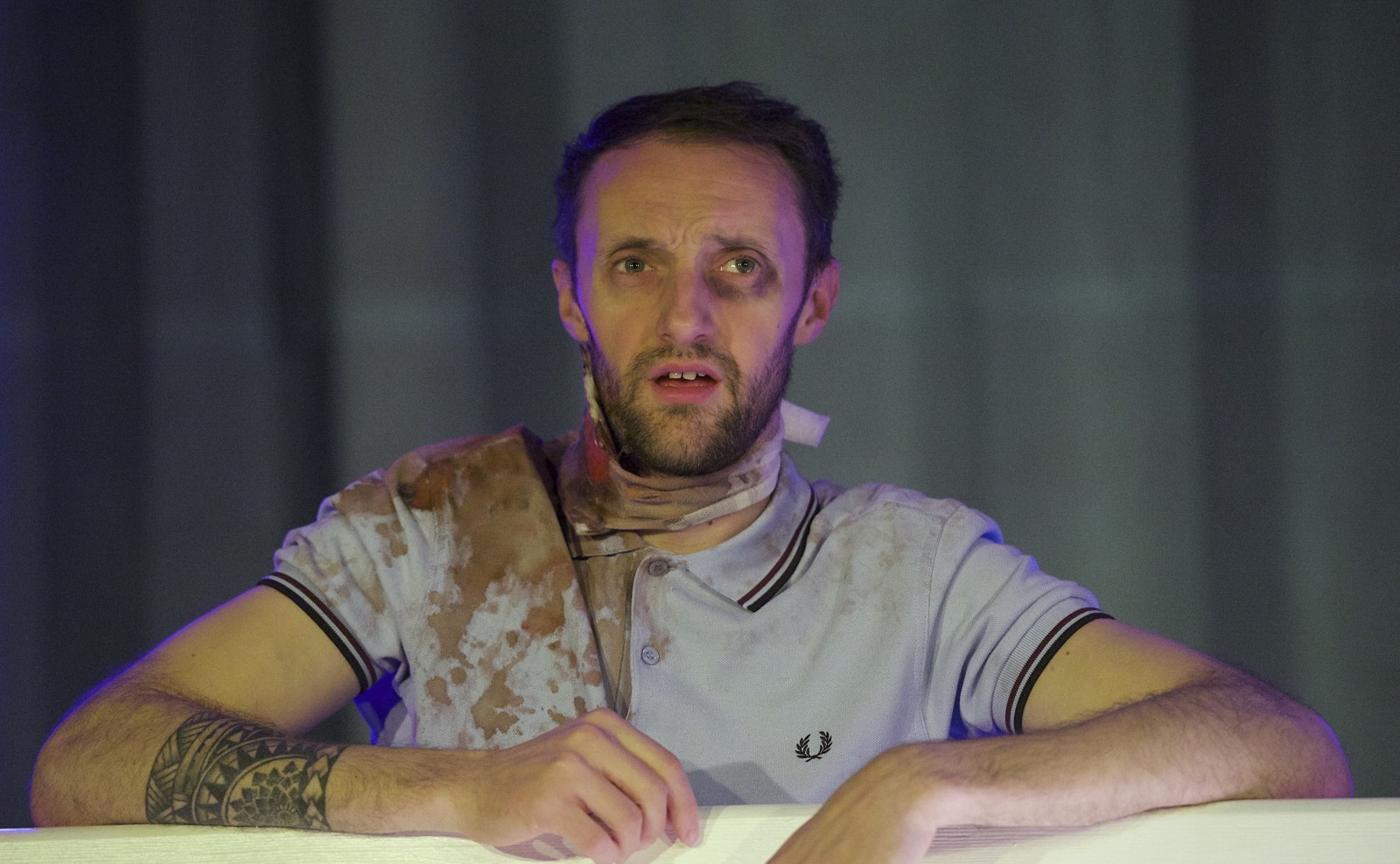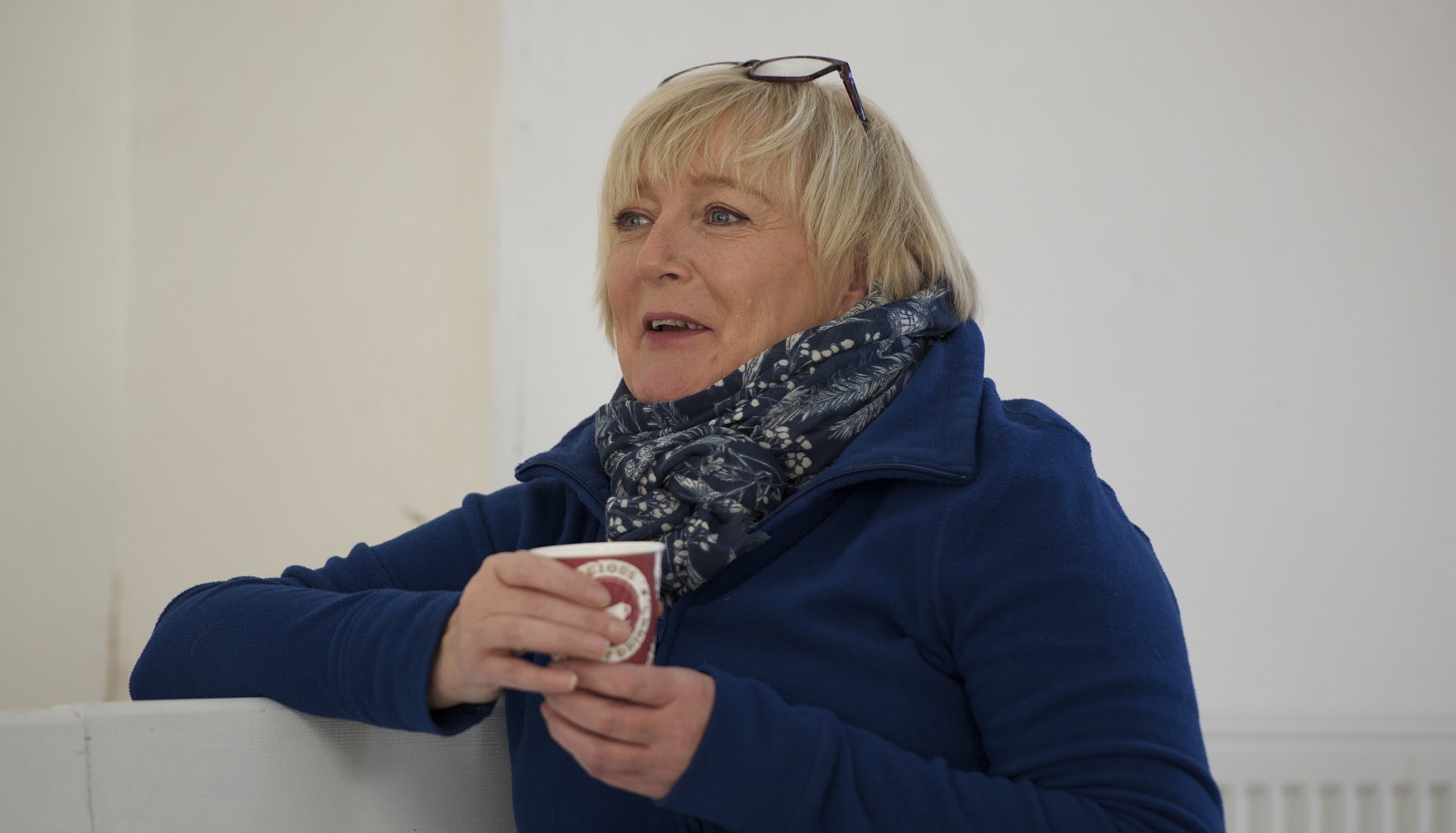Stan Graham has the privilege of attending an outstanding performance of ART by three of the nation’s favourite actors.
Quite a lot of years ago I decided to decorate my new house by hanging a large poster which I resolved to frame myself. I summoned up all of my d-i-y skills and hammered a picture hook into a wall in the lounge. My good intentions ended there as I never got round to framing it and the picture hook was left on the wall as to remove it would have entailed filling the holes and touching up the paintwork, which were jobs far beyond my home improvement ability. Visitors would always comment on the hook and ask when I was going to hang something on it. I used to say that the hook itself was an artwork; it made the statement that, although I was equipped to accept a painting, I did not do so as I was highlighting the pretentious practice of displaying someone else’s work in order to impress. I thought that they would get the irony of this even more pretentious statement but none of them realised that I was taking the Mickey and just changed the subject.
This episode was brought back to mind after watching the brilliant comedy ‘Art’ at the Grand Theatre starring Nigel Havers, Denis Lawson and Stephen Tompkinson. The premise of the play is that Serge (Nigel Havers) spends £200,000 on a ‘painting’ which is a plain white canvas by a fashionable modern artist. His friend Marc played by Denis Lawson takes great offence to this and insults both the work and Serge himself. The third of the friends, Yvan, who as you will have deduced is portrayed by Stephen Tompkinson and, unlike his two professional mates, is a stationery salesman. He has just started a job working for the uncle of his fiancee whom he is due to marry in a few weeks’ time. Yvan tries to keep the peace between the two protagonists but is soon drawn into the argument.
He is also having trouble with the organisation of the wedding. This aspect results in one of the funniest, best delivered solo pieces of acting it has ever been my privilege to witness. I never thought that I would say this but it was just too good. The soliloquy was delivered at such pace and with such ferocity that the audience, including myself, was in uproar, and some of the dialogue was lost in the gales of laughter. Throughout this rant, Serge and Marc are at the side of the stage looking incredulous that their normally passive friend could deliver such an explosive outburst. As you will have gathered by now I found the acting impeccable, covering all emotions from bonhomie to despair, even including a fight scene which obviously ends in disaster. Nigel Havers and Denis Lawson showed their comedy prowess to great effect but it was Stephen Tompkinson who stole the show, being a mixture of Eric Morecambe combined with the odd facial expression reminiscent of Stan Laurel.

The play ran for eight years when first staged in London and it is not difficult to see why. The original cast was Albert Finney, Tom Courtney and Ken Stott which is an endorsement in itself of the quality of the work. The cast members changed over the years with some of the best actors in the country doing a stint, but it is difficult to imagine any trio who could beat this one.
As with any piece for stage, cinema or television, the success depends upon the script, which in this case is by Yasmina Reza who is from a Russian/Hungarian/Iranian/Jewish background, so the play was obviously written in French! Comedy does not normally travel very well across the Channel but Christopher Hampton’s translation means that it works brilliantly although still set in a Parisian apartment. I was amazed how a woman writer could get inside the minds of these three men so convincingly. I cannot think of a male writer who could produce such an accomplished three-handed play for actresses, or one who would dare to try!
The construction of the play was brilliantly handled by the sound and lighting teams. At various points, there would be a sudden dimming of the lights and a crash at which point one of the characters would address the audience directly. The interior of the apartment was all white and the walls were panelled. The centre one on the main wall revolved to reveal a painting to indicate whose apartment it was. Marc’s flat had an old master, Yvan’s a modern ‘daub’ and Serge’s was bare. He would keep carrying his white canvass onto the stage from the wings and then putting it away. The room was furnished with a low table and three chairs; one Barcelona style, one Regency and another mid-twentieth century mass-produced version, all of which were white and chosen to reflect the homes of each character.
The play ends with the three characters sitting in the apartment, each delivering a piece to the audience, and as they finish, their part of the stage goes black except for a spotlight shining on them from above in one of the primary colours, until at the end the set is completely dark except for a blue, a yellow and a red character. If I remember my school physics lessons properly, should these three coloured lights be combined they will produce – guess what? – white.



